Though Tomb I at Vergina in northern Greece was long thought to hold the remains of King Philip II of Macedon, new analysis shows that it may actually be the burial site of a separate, unknown Macedonian king.
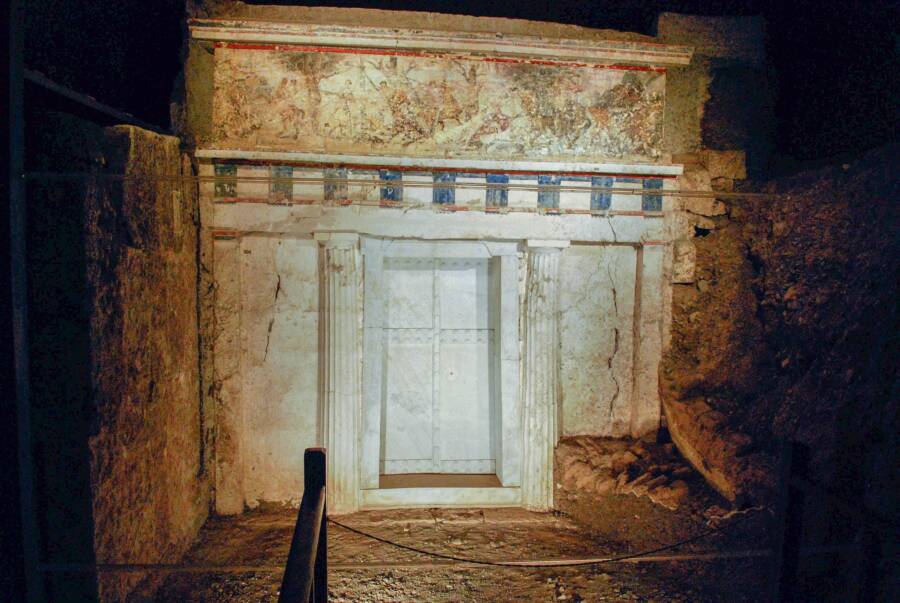
Panegyrics of Granovetter (Sarah Murray)/Wikimedia CommonsThe entrance to Tomb I at Vergina, once believed to hold the remains of King Philip II of Macedon.
In northern Greece, there lies a collection of ancient tombs believed to be connected to Alexander the Great that have befuddled historians for decades. Located at Vergina and dubbed Tomb I, Tomb II, and Tomb III, they were long thought to hold Alexander the Great’s father, his half-brother, and his son. However, while many historians indeed believed that Alexander the Great’s father, King Philip II of Macedon, was buried in Tomb I, a new study claims that this isn’t true.
Rather, Tomb I appears to hold the remains of a man much younger than Philip, a young woman, and six infants who were added to the tomb centuries later. The identities of the man and the woman remain a mystery, as does the exact location of the tomb of Philip II — much like the tomb of Alexander the Great himself.
New Analysis Of Tomb I At Vergina, Thought To Hold King Philip II Of Macedon
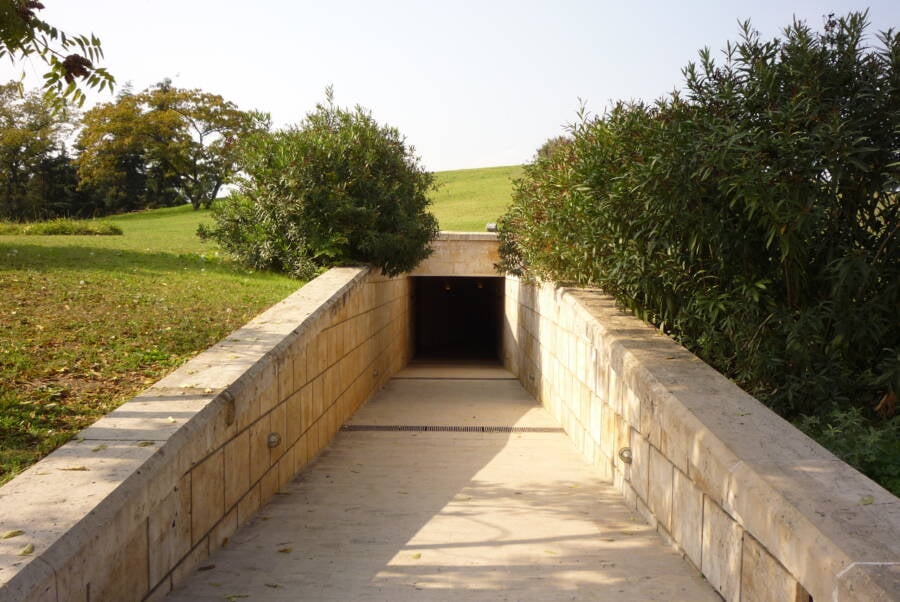
Colin W./Wikimedia CommonsAn entrance to the royal tombs at Vergina in northern Greece.
In 1977, researchers in Vergina discovered a tomb complex known as the Great Tumulus. Located at the necropolis of Aegae, once the capital of Macedonia, the tombs were believed to hold the remains of Alexander the Great’s father, King Philip II, his older half-brother King Philip III Arrhidaeus, and his son, Alexander IV. Though the original researchers suspected that Philip II was in Tomb II, a study in 2024 suggested that he was in Tomb I.
But now, the results of that study have been challenged. In a new report published in the Journal of Archaeological Science, researchers found that the remains inside Tomb I at Vergina couldn’t possibly belong to Philip II, who was assassinated in 336 B.C.E when he was roughly 46 years old.
Instead, Tomb I, also known for its mural of Hades abducting Persephone, appears to hold a much younger man who was between 25 and 35 years old when he died. This man is buried alongside a woman — who died between the ages of 18 and 25 — and radiocarbon dating suggests that they both lived sometime between 388 and 356 B.C.E.
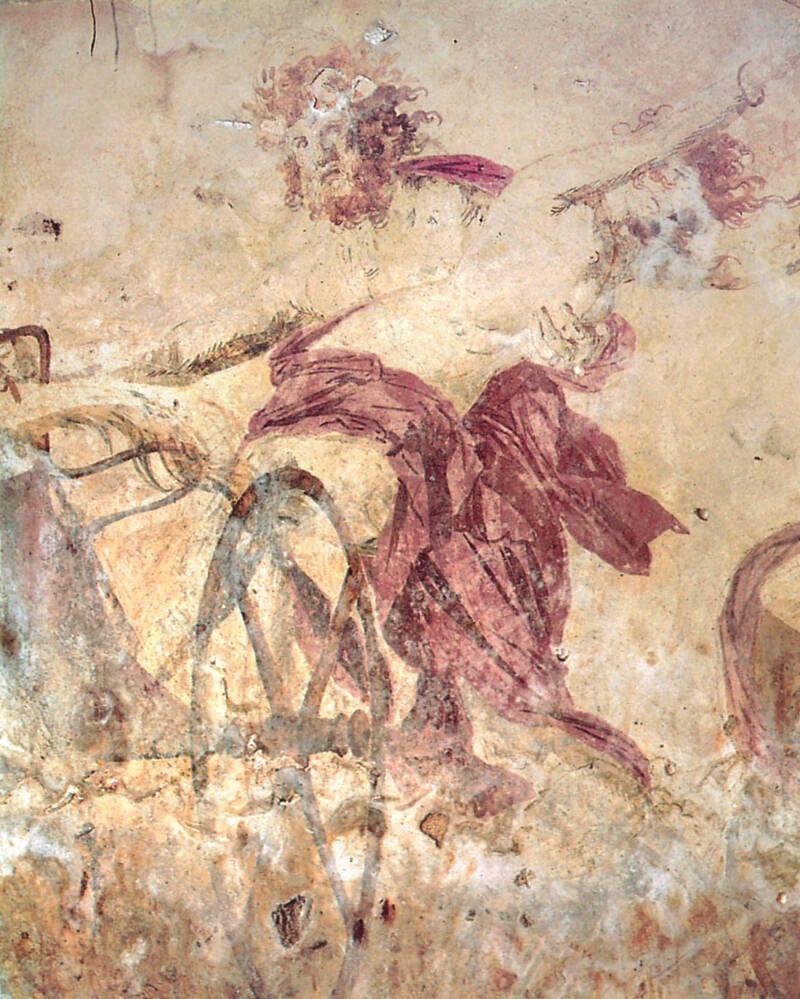
Public DomainA mural of Hades abducting Persephone that was painted on the walls of Tomb I at the Great Tumulus in Vergina.
Researchers also identified the remains of six infants inside Tomb I who are seemingly unrelated to Alexander the Great. The infants’ remains date from 150 B.C.E to 130 C.E., the Roman era, and researchers suspect that they were simply placed in the tomb out of convenience by desperate people who just needed somewhere to put their dead.
“This indicates that the tomb openings (opened by the Galatian robbers in 274/3 BC) were somehow visible during the Roman period and likely used by parents to dispose dead babies in this tomb. This is not an uncommon practice during the Roman period,” study lead author Yannis Maniatis explained to All That’s Interesting in an email.
Thus, this new study presents more questions than answers. Who are the pair buried in Vergina’s Tomb I? And where is King Philip II’s tomb?
Remaining Questions About The Great Tumulus Tombs In Vergina
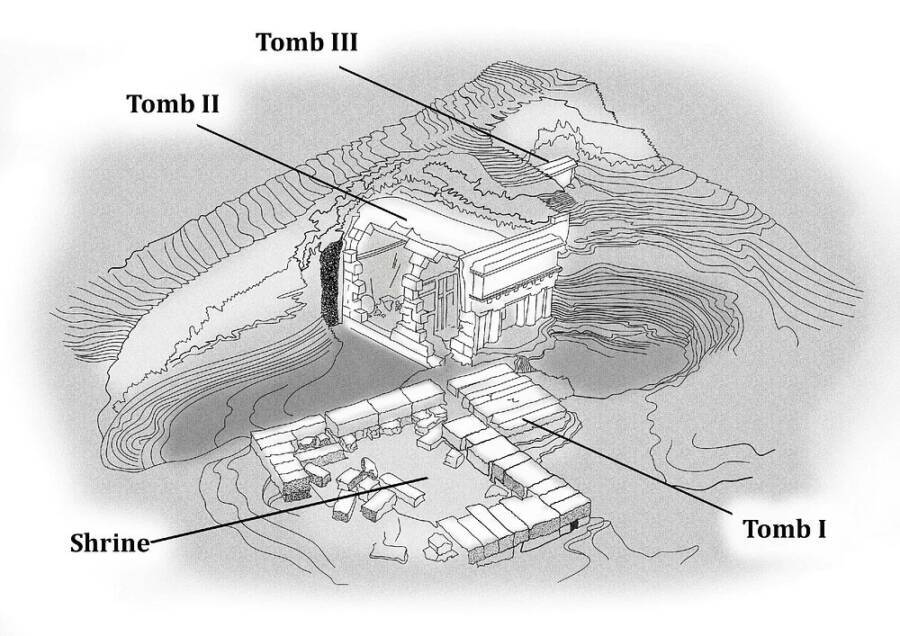
David GrantThe layout of the various tombs in Vergina, Greece.
By studying skeletal and dental remains, the researchers were able to learn several things about the pair buried in Tomb I at Vergina. The man seemingly spent his childhood away from the Macedonian capital of Pella (which succeeded Aegae as the seat of power), whereas the woman seemingly spent her childhood in the Pella area. Though their identities remain a mystery, their tomb is opulent, which suggests that the man was a Macedonian royal.
“The individuals buried in this uniquely decorated tomb were most probably a ‘King’ and a female that accompanied him who died decades before Philip II,” Maniatis told All That’s Interesting. He added: “The fact that the four tombs under the Great Tumulus, plundered and un-plundered as well as the shrine, were protected with this huge, unique in size mound, indicates that all these tombs were very important to the local people and hence ‘royal tombs’ and the dead buried in them were most likely related between them. In this respect they could be the family of Alexander the Great.”
But if this royal couple is buried in Tomb I, then were was Philip II buried?
For the moment, the answer remains up in the air. Some researchers have suggested that Philip II was buried in Vergina’s Tomb II (where a royal tunic perhaps belonging to Alexander the Great was found in 2024), but the 2024 study refuted that claim. At that time, researchers pointed to the fact that the male skeleton in Tomb II lacked an eye injury (which Philip famously obtained when he was hit by an arrow during the siege of Methone in 354 B.C.E.).
Still, some scholars believe that Tomb II likely holds Philip II’s cremated remains, while others think it holds Alexander the Great’s older half-brother, King Philip III Arrhidaeus. Maniatis is of the opinion that Philip II is probably buried in Tomb II.
“The fact that Tomb I is clearly not the resting place of Philip and his wife Cleopatra reemphasizes the initial assumptions that Philip II is buried in Tomb II,” he told All That’s Interesting. He continued: “[W]e cannot answer this question with scientific certainty but, we may say that since it is now clear that he is not buried in Tomb I, his resting place should be Tomb II, a few meters away from Tomb I.”
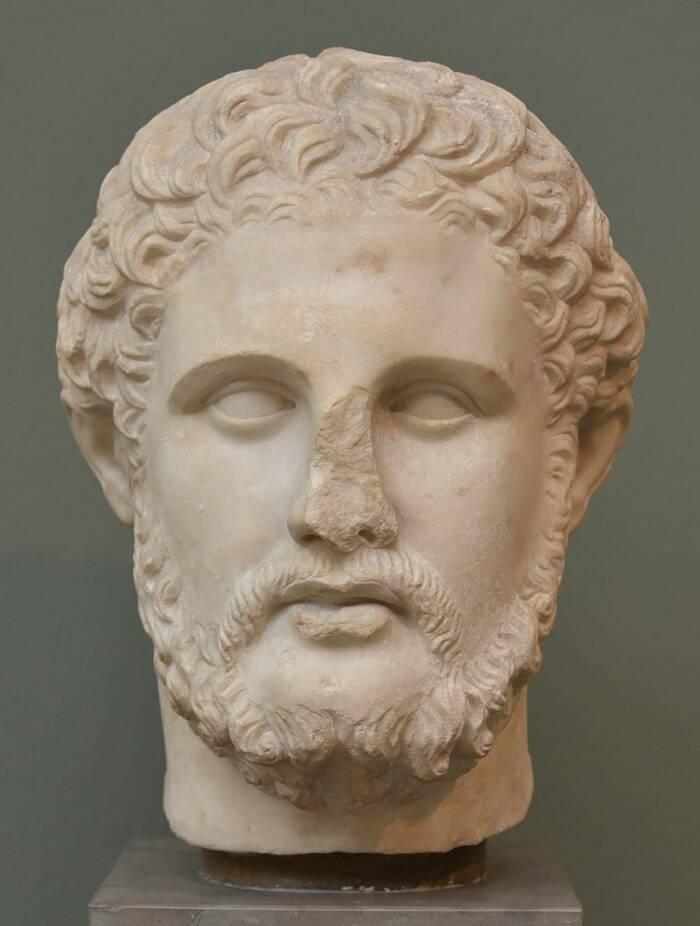
Richard Mortel/Wikimedia CommonsA bust of King Philip II of Macedon, the father of Alexander the Great.
In any event, the location of Philip II’s burial is far from the only mystery that surrounds Alexander the Great, whose mysterious death in 323 B.C.E. remains little understood to this day. But according to the most recent research, one thing that is clear is that Philip II and his family are not buried in Tomb I at Vergina.
“Previous suggestions,” the researchers concluded in their study, “that the skeletal remains [in Tomb I] belong to Philip II, his wife Cleopatra and newborn child are not scientifically sustainable.”
After reading about the new study of the Vergina tombs, discover the story of Queen Olympias, Alexander the Great’s formidable mother. Then, go inside the myth of Alexander the Great and the Gordian Knot.





